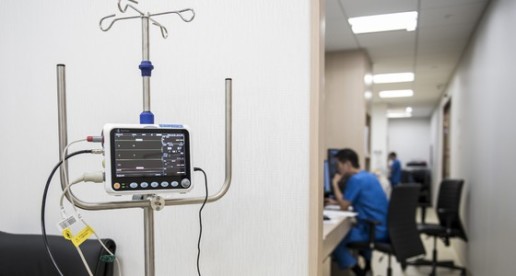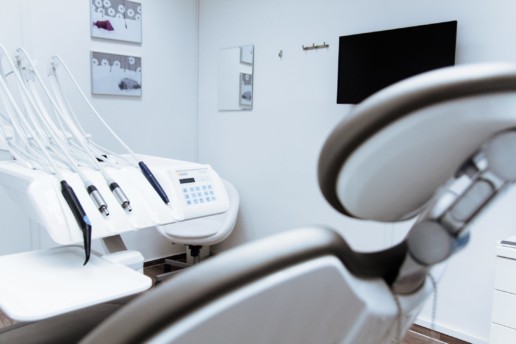It’s time to incorporate cancer screenings into your wellness program
The National Cancer Institute reported that newer FDA-approved novel immunotherapies have shown to be beneficial responses to colorectal cancer but can cost upwards of $400,000 per year. This post from Employee Benefit News discusses incorporating cancer screenings into corporate wellness programs.
Scott Wilson, an employee at brewing company Molson Coors in Denver, was diagnosed with stage four metastatic colorectal cancer in 2016 — a disease that would cost him upward of $1.3 million to date, with significant dollars paid out for non-covered medical expenses.
As a consequence of a later-stage diagnosis, colon and liver resections were necessary coupled with aggressive treatment using chemotherapy and Vectobix — a newer and costly immunotherapy that is priced at $8,000 per week. On average, more than 40,000 people undergo treatment for metastatic colorectal cancer each year and the cost of treatment varies depending on the stage at diagnosis, treatment response and plan.
The availability of newer FDA-approved novel immunotherapies have shown to be beneficial responses to this deadly cancer, but at staggering costs that can be upward of $400,000 per year at market introduction, according to the National Cancer Institute.
Today, about 60% of diagnosed colorectal cases are discovered in later stage disease due to under-screening — a third of the eligible population have never been screened or are not up-to-date with screening guidelines. As a result, about 140,000 Americans are diagnosed with any stage of colorectal cancer and about 51,000 people die of this cancer annually. A recent study examined 1,750 colorectal cancer deaths from 2006 to 2012 in the Kaiser Permanente Health System — 76% of those deaths occurred in patients who were never screened or were not up-to-date with screening.
Cancer screening in the workplace
Last year, the American Cancer Society lowered the colorectal cancer screening age to 45 based on the rising rates of cancer trending in younger age populations — other cancer organization’s recommendations remain at age 50. Employers are in a unique position to reinforce and support these national recommendations among their employees.
Employees between 50 and 65 years of age have the lowest screening rates for colorectal cancer screening, and are typically covered by employer-sponsored health plans. Employers find offering cancer screening programs that reward participation via health and wellness programs are reducing disease risk and financial burdens for themselves and their employees.
The costs for treatment of cancer are more than double the rate of other healthcare expenses. For an employer, the impact of a late versus an early stage diagnosis is significant. National expenditures for treatment and care of colorectal cancer are second only to breast cancer.
In people age 65 and younger, the U.S spends in excess of $7.4 billion for treatment of colorectal cancer. For those employees diagnosed with any stage of colorectal cancer, a large percentage of costs are paid out by company-sponsored health plans despite the implementation of high-deductible health plans.
It would seem prudent to institute a screening initiative to find cancer early in your employee populations, or prevent it altogether by supporting screening for preventable cancers. Employees who test positive are referred by their physician for diagnostic colonoscopy to determine if colorectal cancer is present or to remove precancerous polyps or lesions. The intangible costs associated with cancer is the time off of work for treatment and lost productivity.
Most companies administer a wellness program for employees and families, like Molson Coors, but only about 20% offer colorectal cancer screening. Incorporating a blood test as a preventive cancer screening strategy alongside workplace wellness programs can get employees up-to-date with screening recommendations. Employers who are interested in instituting a colorectal cancer screening program in the office should consider the following suggestions.
Incorporate CRC screening into wellness programs. Screenings provide the opportunity to identify risks early and can bridge the gap between doctor office visits for employees who do not see their providers on a regular or annual basis.
Partner with third-party administrators. Third party administration services can ensure HIPAA regulations are followed for privacy. TPAs also will arrange for the delivery of results.
Create communications campaigns. Target your messaging to those eligible for colorectal cancer screening and make sure to cite the correct statistics for benefits and risk.
Reward participation. Participation is shown to increase when incentives are provided to reward participation. Decide what incentives work for your employees – PTO, financial rewards, gym memberships, coupons or gift cards.
Follow up. Plan for next steps based on employee screenings. Results should be provided in a timely manner to enable employees.
Wilson, the Molson Coors employee, remains in remission for nearly 20 months. He’s since devoted his time to advocate for access to colorectal cancer screening, especially in the workplace. Wilson recently joined the Colorectal Cancer Alliance organization as a board member, a non-profit dedicated to reducing the incidence of colorectal cancer through their many efforts aimed at prevention and awareness. He also wrote a book, “Through the Window: A Photographic Tale of Cancer Recovery” for the alliance. Wilson has been an advocate for the vital need for employee access and employer support for CRC screening in the workplace.
SOURCE: Childers, P. (27 June 2019) "It’s time to incorporate cancer screenings into your wellness program" (Web Blog Post). Retrieved from https://www.benefitnews.com/opinion/add-cancer-screenings-to-wellness-programs
Engaging employees in healthcare — even while traveling
In 2018, Americans took 463.6 million trips for business, leaving employees unsure of what to do when they get sick or injured while away. Read this blog post for how employers can engage employees who are traveling in healthcare.
Business travel is booming. Americans took 463.6 million trips for business last year. But what happens when a business traveler gets sick or injured while away from home and how can employers help their employees in this situation?
It starts with a simple solution: Make sure you’re providing employees with a health insurance plan that includes coverage outside the state or region where the business is located. While the majority of plans provide coverage for illnesses and injuries that meet the insurer’s definition of an emergency, some plans don’t cover care for common serious, but non-emergency health problems like strep throat, migraine headaches, a sprained ankle or back pain. Employers should ensure they offer at least one plan option that includes either an extended physician and hospital network or coverage for out-of-network care.
If employees need to travel out of the country for business, employers may want to consider offering travel medical insurance, which provides coverage during the period of time while the employee is outside the U.S. and medical evacuation if needed. To ensure employees have all the immunizations they need and are aware of any health risks at their destinations, employers can offer access to or reimbursement for pre-trip visits with a travel medicine specialist.
Even when employees have health insurance that gives them access to care while they’re away from home, connecting with experienced healthcare providers can still be difficult. Some insurers offer phone support for plan members seeking care providers, although often these providers are not heavily vetted for the experience or providing the highest quality care. Health advisory services can also help employees find and connect with healthcare providers in the U.S. and overseas.
When considering health advisory firms, employers should ask how the firm vets the healthcare providers it connects employees with and whether the firm uses a set network of providers or whether it connects employees with the most appropriate providers regardless of their health system affiliation.
Make sure employees know how to find the right type of care
When an employee falls ill or gets injured while traveling for business, her or his first instinct may be to seek care at a local emergency room, but that’s not always the best option. In addition to long wait times, the cost of care delivered in the emergency room is significantly higher than other care settings.
- Employers can help employees make better choices by providing information about the options available and how to choose the right care setting:
- The emergency room for serious, life-threatening illnesses and injuries such as chest pain, symptoms of a stroke, serious burns, head injury or loss of consciousness, eye injuries, severe allergic reactions, broken bones and heavy bleeding
- An urgent care center for conditions you’d usually make a doctor’s appointment for such as vomiting or diarrhea, fever, sprains, moderate flu symptoms, small cuts, wheezing and dehydration
- A walk-in or retail clinic for minor problems such as a rash with no fever, mild flu-like symptoms, sore throat, cough and congestion, ear pain and eye itchiness or redness
- Telemedicine or virtual physician visits for minor illnesses and injuries and advice on whether additional care is needed
The key to helping employees know which care setting is the most appropriate is ongoing communication and education, which can take the form of in-person meetings with the benefits team, newsletter articles and email blasts, and video content shared through the company’s intranet channels.
Employees who are living with chronic health conditions should take special steps when traveling for business, including ensuring they have enough of any prescription medication they take and bringing an extra prescription with them for essential medications in case they’re lost in transit.
Ensure employees can quickly share their medical records with providers
Another important part of the healthcare equation for business travelers is ensuring that when they need care while they’re on the road, the healthcare providers who treat them can get quick, secure access to their medical records. Access to these records is important for several reasons:
- It gives a provider who’s not familiar with the employee’s medical history a comprehensive look at past and current health problems and chronic conditions, medications, allergies or adverse reactions, and treatments and surgeries. Having this information can lower the risk of misdiagnosis, inappropriate care and duplicate care or testing, which not only adds unneeded costs but can also cause harm.
- This information can be especially important when employees are seriously ill or injured and can’t speak for themselves to share medical history and their wishes about issues like the use of a ventilator or feeding tube.
There are several online services and apps that allow users to upload medical records so they can share them with healthcare providers. Another option is to work with a health adviser who can make sure employees’ records are carefully reviewed to ensure accuracy and stored in a secure universal medical record that can be accessed in minutes by treating physicians anywhere in the world.
Giving employees who travel for business the right resources and guidance can not only increase their peace of mind, it can help make sure they have access to the care they need wherever work takes them.
SOURCE: Varn, M. (18 June 2019) "Engaging employees in healthcare — even while traveling" (Web Blog Post). Retrieved from https://www.benefitnews.com/opinion/engage-employees-in-healthcare-when-traveling
One overlooked way to promote well-being: Target oral health
Are you promoting oral health when promoting employee wellness? Research shows an association between gum disease and conditions like diabetes and coronary artery disease. Continue reading to learn more.
With the cost of employer-sponsored healthcare benefits approaching $15,000 a year per employee, according to the National Business Group on Health, innovative companies are looking for new and creative ways to get maximum value from their benefits dollars.
By embracing benefits strategies focused on overall health, companies can help their current employees be healthier and more productive and attract and retain the workers they need to succeed in today’s competitive labor markets.
And although wellness programs or health apps might first spring to mind, there’s an overlooked way to promote employees’ health: oral care.
Guided by research that shows associations between gum disease and conditions like diabetes and coronary artery disease, forward-thinking dental insurers are developing products that emphasize the importance of regular oral care, particularly for workers with those conditions — and smart companies are jumping on board.
Products that emphasize the importance of maintaining oral health are an important step in integrating care. Over the next several years, leading-edge insurers will create new ways to engage patients in conversations about their dental and overall health, as they seek to encourage behavior changes and improve health outcomes. To help improve oral and overall well-being, insurers will need to share oral care information with their members through targeted emails, text messages and phone calls.
Additionally, because individuals dealing with a complex treatment plan may put off receiving oral care while they address their medical issues, they could benefit from plans featuring a case manager, or a “dental champion.” Working in conjunction with medical case managers, a dental champion can help employees understand how receiving regular oral care can influence their overall health. They also can ensure a company’s workforce is getting the oral care they need, helping them find providers and arrange appointments.
Savvy employers recognize that any realistic effort to limit the increase in healthcare costs begins by addressing chronic ailments. According to the Centers for Disease Control and Prevention, six in 10 Americans live with at least one chronic disease, like heart disease, cancer, stroke or diabetes.
By promoting overall health — including regular oral care — employers can encourage positive lifestyle changes that help their employees reduce the likelihood of many chronic problems. Those who brush and floss their teeth regularly, receive frequent cleanings and checkups and deal with oral issues at early stages are taking steps to improve their overall health.
Because everyone’s individual situation is different, insurers and employers will need to include a more personalized approach, engaging members in conversations about their dental health and how it contributes to attaining their overall health goals.
SOURCE: Palmer, T. (13 June 2019) "One overlooked way to promote well-being: Target oral health" (Web Blog Post). Retrieved from https://www.benefitnews.com/opinion/promoting-wellbeing-through-dental-health
Why employers can’t hit snooze on tired employees
Research shows that a lack of sleep can negatively impact performance and mental and physical health. The Centers for Disease Control and Prevention reports that more than a third of American adults are not getting the recommended 7-8 hours of sleep each night. Continue on to learn more.
It’s time for a wake-up call. We’ve all heard the familiar phrases — sleep when you’re dead or burn the midnight oil from high-powered CEOs and celebrities touting how they sacrificed sleep to advance their careers.
But research shows that lack of sleep may have the opposite effect. Rather than helping people get ahead at work, losing out on sleep can negatively impact performance and, more importantly, mental and physical health.
It’s time for employers to recognize the role sleep plays in employee well-being and take steps to foster a workplace culture that reinforces and encourages healthy behaviors.
More than a third of American adults are not getting the recommended 7-8 hours of sleep, according to the Centers for Disease Control and Prevention. A lack of sleep can lead to:
- Increased absenteeism and illness. The U.S. loses an equivalent of around 1.2 million working days due to insufficient sleep, and research has found that sleeping fewer than five hours consistently is associated with staying home sick for 4.6 to 8.9 more days.
- Lost productivity. Losing even just a bit of sleep can affect productivity. A recent study found that participants who lost just 16 minutes of sleep on a nightly basis reported having more distracting thoughts at work.
- Consequences for physical and mental wellbeing. Lack of sleep has major consequences on long-term health, including increased rates of chronic diseases and conditions, such as diabetes, heart disease and hypertension.
Lack of sleep affects workers regardless of occupation. For employees who work shifts (often overnight), such as in call centers, manufacturing, hospitals and oil and gas, losing sleep can become a safety risk. In fact, findings have shown that shift work sleep disorder impacts approximately 10% of the night and rotating shift work population.
So how can we promote a healthy sleep culture? There are a number of tools and programs that employers can use to show they value and encourage healthy sleep habits, educate employees about how sleep can improve their work performance and support them in sticking to sleep goals. Organizations like the National Sleep Foundation offer employers resources to learn more about the benefits of sleep tracking to monitor sleep stages and tips to improve sleep for everyday health.
Employers can provide employees with tip sheets, send emails or hang posters around the office to encourage healthy sleep habits and explain how critical sleep is for their wellbeing. Tips employers can share include shutting down electronics 30 minutes before bedtime, keeping smartphones and laptops away from bed to create a sleep zone and using a guided breathing exercise or meditation apps to help the body wind down. It’s also important for managers to lead by example and encourage healthy sleep habits, including avoiding sending emails too late in the evening and being conscious of employees working in other time zones.
Wearables can also help people track their activity, sleep and overall health goals. Before the launch of wearable devices, many types of health data, including quantity and quality of sleep, were only accessible to study participants via sleep labs – which are both costly and time consuming. With today’s technology, employees can better understand their sleep patterns and use that data to find a sleep plan that works for them.
Sleep tracking can also be useful to help employees correlate data and insights based on their schedules, activity levels and what they’ve had to eat or drink. For instance, someone who tracks their sleep may find that getting exercise after work helps them get a better night of rest. Having a different sleep pattern on work days versus days off can cause social jetlag — a feeling almost like changing time zones that can take a significant toll on sleep cycle and overall health. That’s why it’s important to keep a consistent sleep schedule throughout the week and the weekend.
Here’s the bottom line: insufficient sleep contributes to poor productivity, worse health outcomes, absenteeism at work and can create safety risks. Today, more and more employers are working to combat the idea of sacrificing sleep in corporate culture and are recognizing that it is an asset to the workplace, not an enemy.
SOURCE: McDonough, A. (28 May 2019) "Why employers can’t hit snooze on tired employees" (Web Blog Post). Retrieved from https://www.benefitnews.com/opinion/sleep-deprivation-impacting-company-bottom-line
Workplace Wellness Programs Barely Move The Needle, Study Finds
A recent study from JAMA found that workplace wellness programs do not cut costs for employers, reduce absenteeism or improve workers' health. Read this blog post to learn more about this recent study.
Workplace wellness programs have become an $8 billion industry in the U.S. But a study published Tuesday in JAMA found they don’t cut costs for employers, reduce absenteeism or improve workers’ health.
Most large employers offer some type of wellness program — with growth fueled by incentives in the federal Affordable Care Act.
A host of studies over the years have provided conflicting results about how well they work, with some showing savings and health improvements while others say the efforts fall short.
Many studies, however, faced a number of limitations, such as failing to have a comparison group, or figuring out whether people who sign up for such wellness programs are somehow healthier or more motivated than those who do not.
Now researchers from the University of Chicago and Harvard may have overcome these obstacles with one of the first large-scale studies that is peer-reviewed and employs a more sophisticated trial design.
They randomly assigned 20 BJ’s Wholesale Club outlets to offer a wellness program to all employees, then compared results with 140 stores that did not.
The big-box retailer employed nearly 33,000 workers across all 160 clubs during the test.
After 18 months, it turned out that yes, workers participating in the wellness programs self-reported healthier behavior, such as exercising more or managing their weight better than those not enrolled.
But the efforts did not result in differences in health measures, such as improved blood sugar or glucose levels; how much employers spent on health care; or how often employees missed work, their job performance or how long they stuck around in their jobs.
“The optimistic interpretation is there is no way we can get improvements in health or more efficient spending if we don’t’ first have changes in health behavior,” said one study author, Katherine Baicker, dean of the Harris School of Public Policy at the University of Chicago. (Dr. Zirui Song, an assistant professor of health policy and medicine at Harvard Medical School, was its co-author.)
“But if employers are offering these programs in hopes that health spending and absenteeism will go down, this study should give them pause,” Baicker said.
The study comes amid widespread interest in wellness programs.
The Kaiser Family Foundation’s annual survey of employers found that 53% of small firms and 82% of large firms offer a program in at least one of these areas: smoking cessation, weight management and behavioral or lifestyle change. (Kaiser Health News is an editorially independent program of the foundation.)
Some programs are simple, offering gift cards or other small incentives to fill out a health risk assessment, take a lunch-and-learn class or join a gym or walking group. Others are far more invasive, asking employees to report on a variety of health-related questions and roll up their sleeves for blood tests.
A few employers tie financial incentives to workers actually lowering risk factors, such as high blood pressure or cholesterol — or making concerted efforts to participate in programs that might help them do so over time.
The Affordable Care Act allowed employers to offer financial incentives worth up to 30% of the cost of health insurance, leading some employers to offer what could be hundreds or even thousands of dollars off workers’ deductibles or premiums to get them to participate. That led to court challenges about whether those programs are truly voluntary.
In the study reported in JAMA, the incentives were modest. Participants got small-dollar gift cards for taking wellness courses on topics such as nutrition, exercise, disease management and stress control. Total potential incentives averaged $250. About 35% of eligible employees at the 20 participating sites completed at least one module.
Results from those workers — including attendance and tenure data, their self-reported health assessment and results from lab blood tests — were specifically compared with similar reports from 20 primary comparison sites where workers were not offered the wellness gift cards and classes. Overall employment and health spending data from all worksites were included in the study.
Wellness program vendors said details matter when considering whether efforts will be successful.
Jim Pshock, founder and CEO of Bravo Wellness, said the incentives offered to BJ’s workers might not have been large enough to spur the kinds of big changes needed to affect health outcomes.
Amounts of “of less than $400 generally incentivize things people were going to do anyway. It’s simply too small to get them to do things they weren’t already excited about,” he said.
An accompanying editorial in JAMA noted that “traditional, broad-based programs like the one analyzed by Song and Baicker may lack the necessary intensity, duration, and focus on particular employee segments to generate significant effects over a short time horizon.”
In other words, don’t give up entirely on wellness efforts, but consider “more targeted approaches” that focus on specific workers with higher risks or on “health behaviors [that] may yield larger health and economic benefits,” the editorial suggested.
It could be, the study acknowledges, that 18 months isn’t enough time to track such savings. So, Baicker and Song also plan to publish three-year results once they are finalized.
Still, similar findings were recently reported in another randomized control trial conducted at the University of Illinois, where individuals were randomly selected to be offered wellness programs.
In one interesting point, that study found that wellness-program participants were likely already healthier and more motivated, “thus a primary benefit of these programs to employers may be their potential to attract and retain healthy workers with low medical spending.”
Everyone involved in studying or conducting wellness agrees on one thing: Changing behavior — and getting people motivated to participate at all — can be difficult.
Steven Aldana, CEO of WellSteps, a wellness program vendor, said that for the efforts to be successful they must cut across many areas, from the food served in company cafeterias to including spouses or significant others to help people quit smoking, eat better or exercise more.
“Behavior is more complicated than simply taking a few wellness modules,” said Aldana. “It’s a lifestyle matrix or pattern you have to adopt.”
SOURCE: Appleby, J. (16 April 2019) "Workplace Wellness Programs Barely Move The Needle, Study Finds" (Web Blog Post). Retrieved from https://khn.org/news/workplace-wellness-programs-barely-move-the-needle-study-finds/
A better place to work: How well-being impacts the bottom line
Did you know: One in 10 employers are skeptical about the value of well-being programs. Health challenges, near stagnant wages, financial stress and more can take a personal toll on your employees, causing their stress levels to rise. Read this blog post to learn more.
Logically, employees bring their “whole selves” to work. Unfortunately, health challenges, relatively stagnant wages, heightened financial pressures, always-on technology and contentious geo-political climates around the world all take a personal toll on employees in the form of rising stress.
Employers recognize that the health and well-being of their workers is vital to engagement, performance and productivity, yet one in ten are skeptical about the value of well-being programs. But by learning from peers’ experiences, employers can take steps to help employees improve their well-being through access to related programs and services. And that contributes strongly to the overall success of the organization.
Survey says
According to the 252 global employers polled in the Working Well: A Global Survey of Workforce Wellbeing Strategies, building a culture of well-being is a higher priority than ever. Fully 40 percent of organizations believe they’ve actually achieved it, up from 33 percent in our 2016 survey. Of those who have not, another 81 percent are making plans to get there.
Top priorities for wellness programs in North America were to reduce stress and boost physical activity. Stress is a bottom-line issue for employers: 96 percent identified employee stress as the biggest challenge to a productive workforce.
Closely related priorities were improving nutrition and work-life issues, addressing depression and anxiety, and getting better access to health care services. On the latter, discussion with many employers confirms this includes sufficient access to mental and behavioral health providers—directly related to the top challenge of stress and its more serious potential debilitative consequences that can include anxiety, depression, addiction and more.
Health
The most frequently offered employee health benefits which respondents also assessed as most effective included the following:
- Employee assistance programs (EAPs): By far the most frequent program, offered by 86 percent of global employers and 96 percent of US respondents. About 7 in 10 of those who offer an EAP said it’s effective in achieving their objectives, although actual experience reveals a wish that many more employees would take full advantage of EAP services. Know your numbers assessments, including health screenings and health risk appraisals, rose in prevalence globally and were considered effective by 86 percent of respondents.
- On-site care: While smaller numbers of employers offer on-site immunizations, delivery of medical care, or fitness centers, they were still rated at just over 80 percent effective – demonstrating that convenience and access can remove barriers and enhance results.
- Flexible working policies: These rose in prevalence over our last survey, consistent with other research demonstrating that multiple generations prize work flexibility to enable balance and help manage life’s stressors.
- Wearables: Sensors and trackers also rose in prevalence. Globally, two-thirds of respondents credited them with effectiveness in monitoring and perhaps motivating healthy activities.
The survey also found health literacy is required to engage and drive behavioral change, and employers need targeted solutions to build it.
Finances
Validated by other research, a majority of employees live paycheck to paycheck today. Of US respondents, 87 percent reported financial distress among employees (the global average was 83 percent). Employers cited negative bottom-line results from financial stress, such as lower morale and engagement, delayed retirement and lower productivity, among other detrimental impacts. Other studies show financially stressed employees spend three hours or more each week distracted by it.
In prior years, this survey showed a top focus on saving for retirement; now, non-retirement-related objectives are rapidly catching up as priorities. It’s hard to focus on retirement when current needs are pressing. As a result, well over 7 in 10 employers also seek ways to ensure adequate insurance protection, help in saving for other future needs, better handling day-to-day expenses, reducing debt, and having emergency savings.
ROI vs. VOI
Just under half of respondents have specific, measurable goals or targets and outcomes for their well-being programs overall. But measurement is tricky, and 45 percent of respondents noted a lack of resources to support measurement as the top barrier to metrics. Nevertheless, only 8 percent perceived “no measurable return.”
Of those measuring the health care cost impact, 54 percent reported their programs were reducing trend by 2 to 5 percentage points per year. Financial well-being ratings were more challenging, with only 4 percent globally saying they have objective data to demonstrate their financial well-being program effectiveness.
Concurrently, many placed their bets on technology tools to inform program design and outreach: 84 percent rated predictive analytics as effective in helping to support well-being, even if just over a quarter offer it today—another half plan to do so in the next 2 to 3 years.
A value-of-investment priority emerges from the data. Employers intuitively pursue programs that build goodwill by providing helpful resources. The top four objectives globally focused on engagement and morale, performance and productivity, attraction and retention, and overall, enhancing the total rewards offering while managing spend. While reducing health care costs was the top objective for the US, it was fifth globally. Other objectives linked the organization’s image or brand and values and mission—if the company has a message to external customers, it needs to “walk the talk” internally with employees.
Holistic strategy
Compared to prior surveys, employers continue to explore new ways to support well-being, in response to employee and business needs. The historically stronger emphasis on health-related well-being continues, but financial well-being efforts are on the rise. For the US/Canada, the recent fast-rising program elements have been spiritual well-being (67 percent), retirement financial security and preparedness (57 percent), social connectedness (57 percent), and financial literacy/skills (63 percent).
In total, survey responses suggest employers understand that these well-being issues are interconnected and cannot be effectively addressed in isolation without a more holistic strategy and delivery solutions.
That’s where value of investment comes in, acknowledging that enhancing physical and emotional, financial, social, and other aspects of employee well-being can help make the organization a better place to work.
SOURCE: Hunt, R. (11 April 2019) "A better place to work: How well-being impacts the bottom line" (Web Blog Post). Retrieved from https://www.benefitspro.com/2019/04/11/a-better-place-to-work-how-well-being-impacts-the-bottom-line/
To check or not to check: Managing blood sugar in diabetic employees
There's been a growing prevalence of Type 2 diabetes in the U.S. over the last 20 years. This chronic condition significantly impacts employees, their family members and even employers clinically and financially. Read this blog post to learn more.
Over the last 20 years, there’s been a growing prevalence in the U.S. of Type 2 diabetes, a chronic condition that significantly impacts employers, their employees and family members clinically, financially and through quality of life. With that comes an increase in the use of insulin for people with Type 2 diabetes to better control blood sugar to reduce long-term complications, which includes eye, kidney and cardiac disease, as well as neuropathic complications.
Most of these patients manage their condition with oral medicines versus insulin, and it’s estimated that 75% of patients with Type 2 diabetes regularly test their blood sugar, even though doing so may not be needed. Blood sugar testing is an important tool in managing diabetes as it can help a patient be more aware of their disease and potentially control it better. But it also can be painful, inconvenient and costly.
Blood sugar testing can be an important tool in managing diabetes, and there are two types of tests. The first is a test conducted at home by the patient that shows the blood sugar at a specific point in time. The second type is called HA1c (a measure of long-term blood sugar control) that shows the average blood sugar over the last two to three months. The value of at-home testing is now thought to be questionable.
In 2012, the Patient-Centered Outcomes Research Institute began a study to evaluate the value of daily blood sugar testing for people with Type 2 diabetes not taking insulin. The endpoint for the study was whether there was a difference in HA1c levels for those who did daily testing and those that did not. The conclusion of the study found that there were no significant differences between those two populations.
In response to these findings, the institute developed an initiative called Rethink the Strip that involves stakeholders including primary care practices, healthcare providers, patients, health plans, coalitions and employers. Given the cost for test strips and monitors for patients with Type 2 diabetes who test their blood sugar daily, it’s important to adopt an evidence-based patient-centered approach around the need for and frequency of self-monitoring of blood glucose.
As employees and employers cope with the costs associated with blood sugar testing, there are several strategies that should be considered to better manage this issue. They include:
1. Support shared decision-making. Like all interventions within healthcare, it’s important to weigh both the benefits and the risks of daily blood sugar testing in a thoughtful manner between the patient and their provider.
2. Managed benefit design. Employers should pay for daily blood sugar test strips in cases where it brings value (e.g., Type 1 and Type 2 patients who are taking insulin as well as patients that are either newly diagnosed or are going through a transition period, for example, post hospitalization or beginning a new medication regimen).
3. Involve vendors. To ensure alignment in all messaging to plan members, ask health systems and/or health plans and third-party vendors to align their communication, measurement and provider feedback strategies on when it’s appropriate for daily blood sugar testing.
These strategies can help employees with diabetes understand how their daily activities (nutrition, exercise and stress) and medications impact their condition. This benefits the employee in reaching treatment goals and feeling their best, while also helping employers and employees reduce the need for unnecessary and costly test strips.
This article originally appeared in Employee Benefit News.
SOURCE: Berger, J. (14 March 2019) "To check or not to check: Managing blood sugar in diabetic employees" (Web Blog Post). Retrieved from https://www.employeebenefitadviser.com/opinion/managing-blood-sugar-in-diabetic-employees?brief=00000152-146e-d1cc-a5fa-7cff8fee0000
Dispelling the stigma around mental health disorders in the workplace
Forty million adults in the U.S. are affected by anxiety disorders each year, according to the Anxiety and Depression Association of America. Continue reading to learn more about the stigma associated with mental health disorders in the workplace.
It’s no secret that poor mental health impacts employee performance. Anxiety disorders, for example, affect 40 million adults in the U.S. each year, and nearly six in 10 American workers report that anxiety impacts their workplace performance, according to the Anxiety and Depression Association of America.
But because of the stigma often associated with mental health disorders, employees might not be using the benefits and programs clients have in place to help address the problem. That’s why just having programs in place isn’t enough, experts say. Instead, employers need to help remove the stigma of mental health conditions by creating a culture of inclusiveness in the workplace and forming employee resource groups.
Employers including Johnson & Johnson, Trulia and Verizon Media are doing just that, company executives said during a webinar last week hosted by the National Alliance of Healthcare Purchaser Coalitions.
When Margaux Joffe, associate director of accessibility and inclusion at Verizon Media, started working on a proposal to form a mental health-focused employee resource group (ERG), dispelling stigma and empowering workers was one of her first priorities.

“We wanted to create a paradigm shift,” she said, speaking as part of the webinar. “Growing up, you’re taught to think you’re ‘normal or not normal;’ you’re mentally ill or you’re not. We started with the idea there is no such thing as a ‘normal brain’ as we’re increasingly understanding neurodiversity in the human race.”
A lot of people with mental health issues don’t necessarily identify with the word disability, added Meredith Arthur, content marketing manager at Trulia.
“We struggled around removing the word disability because there was a desire to face the stigma and take it on,” she said of Trulia’s ERG. “Ultimately, we wanted to reach as many people as we could. We wanted to be sharper in our focus on mental health.”
Trulia expanded its ERG statement of purpose from just focusing on mental health education and awareness to advocating for the needs of different abilities.
Joffe said putting in place an ERG for mental health at Verizon was done with the support of senior leadership. “We’ve been lucky to get a lot of support from the company for ERG,” she said. “A common challenge that exists across the board is lack of organization readiness.”
Readiness is a huge component of success in mental health programs, added Kelly Greenwood, founder and CEO of Mind Share, a nonprofit organization addressing the culture of workplace mental health.
“It is so important to achieve true culture change,” she said. “Oftentimes we work with leadership first and do workshops for executive teams before rolling them out to the company to really get that buy-in and understanding from the top down to build a transparent culture.”
At Johnson & Johnson, it took the company about nine months to get its ERG program up and running. “There was a lot of conversation internally if it should be its own ERG for mental health or integrated into another employee resource group,” said Geralyn Giorgio, talent acquisition change management communications and training lead at the pharmaceutical and consumer packaged goods manufacturing company.
At that time, she said, the company had an ERG called the alliance for disability leadership. The decision was made to put mental health under that ERG umbrella. “Since than happened, there were a lot of [employees] not seeing themselves in this ERG. We felt strongly we had to rebrand the ERG, and we went live last year, using the name alliance for diverse abilities to make it more inclusive,” she said.
This year, Giorgio said, the company will work to empower managers to handle mental health conversations.
“If you have a manager open to the conversation, [employees] have a different experience than someone whose manager is ill-informed,” she said. “That’s something we need to focus on this year — helping our managers feel more comfortable with having the conversation.”
This article originally appeared in Employee Benefit News.
SOURCE: Otto, N. (12 March 2019) "Dispelling the stigma around mental health disorders in the workplace" (Web Blog Post). Retrieved from https://www.employeebenefitadviser.com/news/dispelling-workplace-mental-health-stigma?brief=00000152-146e-d1cc-a5fa-7cff8fee0000
7 ways to reduce stress this tax season
Does tax season leave you stressed out? Tax season is here, leaving many employers face-to-face with a number of demands. Continue reading this post from Employee Benefit News for seven ways employers can reduce stress during tax season.
Tax filing season is here, which means many employers will come face-to-face with a number of demands. Whether they do their own taxes, use online tax software or meet with a trusted tax adviser, there are many useful resources out there that will help employers work smarter, not harder.
Here are seven ways employers can reduce stress during tax season.
2019 U.S. Master Tax Guide
The U.S. Master Tax Guide contains timely and precise explanations of federal income taxes for individuals, partnerships and businesses. This guide contains information including tax tables, tax rates, checklists, special tax tables and explanatory text.
Legislative resources
Find a trusted, reputable resource for the latest news, opinions and laws regarding healthcare. Many companies in the industry have a designated section on their website that is dedicated to providing employers with updates and trends in the health insurance industry and how it will affect taxes.
Content Continues Below
Payroll calculators
Employers can use payroll calculators to determine gross pay, withholdings, deductions, net pay after Social Security and Medicare and more. Calculator types include salary payroll calculators, hourly paycheck calculators, gross pay calculators, W-4 assistants, percentage bonus calculators and aggregate bonus calculators.
Keep, shred, toss
Now is the perfect time to organize tax records so that they’re easy to find in case they’re needed to apply for a loan, answer IRS questions or file an amended return.
The IRS has some helpful guidance you can share with your clients on what records to keep and for how long. They should remember to:
- Keep copies of tax returns and supporting documents for at least three years.
- Keep some documents for up to seven years.
- Keep healthcare information statements for at least three years. These include records of employer-provided coverage, premiums paid, advance payments of the premium tax credit received and type of coverage.
Make sure records are kept safe — but when it’s time, shred or destroy
Whether they consist of paper stacked in a shoebox, electronic files stored on a device or in the cloud, it’s important to safeguard all personal records, especially anything that lists Social Security numbers. Consumer Affairs recommends scanning paper and keeping records stored securely on a flash drive, CD or DVD.
It’s more important than ever for employers to keep personal information out of the hands of identity thieves. That means not tossing records in the trash or recycling bin. Home paper shredders are often inadequate for large piles of paper, but many communities have professional, secure document shredding services.
Content Continues Below
Start as early as possible
A deadline looming always makes the situation more stressful. It’s very important for employers to not wait until the last minute to start their tax return. If they choose to use a tax professional, be sure that they get in early. Tax professionals take on many clients, and only have a short timeframe to get all the work done.
Be honest
It may be tempting for employers to tell a white lie on their taxes to maximize their tax breaks or return, but that comes at a great risk. If they are audited by the IRS, they will liable for whatever was reported.
SOURCE: Waletzki, T. (12 March 2019) "7 ways to reduce stress this tax season" (Web Blog Post). Retrieved from https://www.benefitnews.com/list/how-to-reduce-stress-this-tax-season?brief=00000152-14a5-d1cc-a5fa-7cff48fe0001
How employers can take advantage of the best-kept wellness secret
How can you take advantage of insurance companies’ best-kept secret? Some insurance carries pay wellness dollars to companies who implement wellness programs. Read on to learn more.
Did you know some insurance carriers pay companies to implement wellness programs? It’s called wellness dollars, and it is insurance companies’ best-kept secret.
Wellness dollars are a percentage of a company’s premiums that can be used to cover wellness-related purchases. The healthier employees are, the fewer dollars insurance carriers need to pay out for a policy. Many insurers have incentives like wellness dollars for employers to improve the well-being of their workers.
The benefits of adding a wellness program are plenty. These programs typically generate a positive return on investment for companies. Research done by three Harvard professors found that overall medical costs decline $3.27 for every dollar spent on wellness programs. Costs from absenteeism fall about $2.73 for each dollar. Well-designed programs can improve employees’ overall wellbeing and life satisfaction, according to a report from the U.S. Chamber of Commerce.
It’s a new year, and group health insurance plans are starting fresh. Here’s how employers can take advantage of wellness dollars.
Get in touch with your carrier. The first step is to get in touch with your insurance carrier to find out if your self-insured or fully-insured plan covers participatory or health-contingent programs. If you don’t have wellness dollars, it’s still early in the year, and it’s worth negotiating to see if you can include them in your company’s current package.
You will work with your insurance carrier to determine how your wellness dollars can be spent, based on an agreed-upon contract. The amount of wellness dollars that you receive depends on the number of employees and profitability.
Every company is different, so the range of services varies and could include wellness programs, gym memberships, nutrition programs, massages and more. Sometimes incentives for wellness activities can be used; sometimes it can’t. Ask your carrier for a complete list of covered expenses. This will help you as you shop around to find the right offerings. Save receipts and records for reimbursements.
Determine the best use. There are a few ways to determine what offerings you should use for your company. Before making any decisions, ask your employees and the leadership team what type of program they would be most likely to engage in. Gallup named the five elements that affect business outcomes: purpose, social, community, physical and financial. Look for a comprehensive program that includes these five elements, instead of coordinating with multiple vendors. If only a portion of your expenses will be reimbursed, it’s still worth getting a wellness program. They have cost-savings on an individual and team level.
Wellness programs are all about building culture, and with unemployment at a record low, it’s a sticking point to keep employees invested in your company. A few examples of wellness offerings include fitness classes, preventive screenings, on-site yoga, financial wellness workshops, healthy living educational workshops, and health tracking apps.
Once you’ve implemented wellness offerings in your workplace, keep track of your company’s progress. Create a wellness task force, a healthy workplace social group, or conduct monthly survey check-ins to make sure employees are staying engaged. Some wellness programs utilize technology to track participation, integrate with wearables, and report other analytics. Ask your insurance carrier if wellness dollars have flexibility in adding or changing the services throughout the year, based on engagement.
SOURCE: Cohn, J. (14 February 2019) "How employers can take advantage of the best-kept wellness secret" (Web Blog Post). Retrieved from https://www.benefitnews.com/opinion/how-employers-can-take-advantage-of-the-best-kept-wellness-secret









